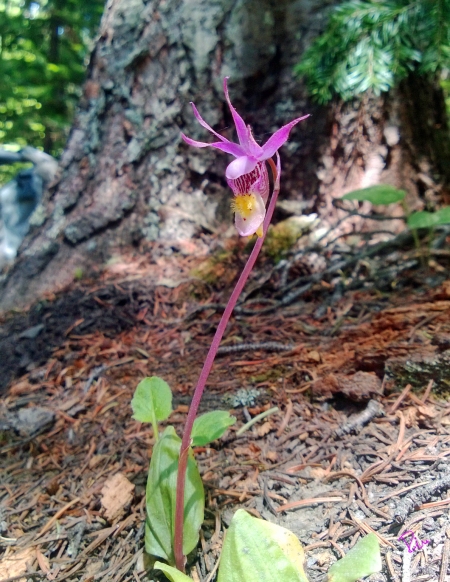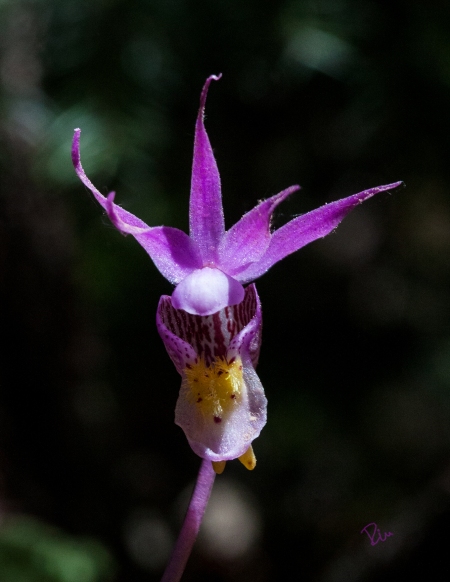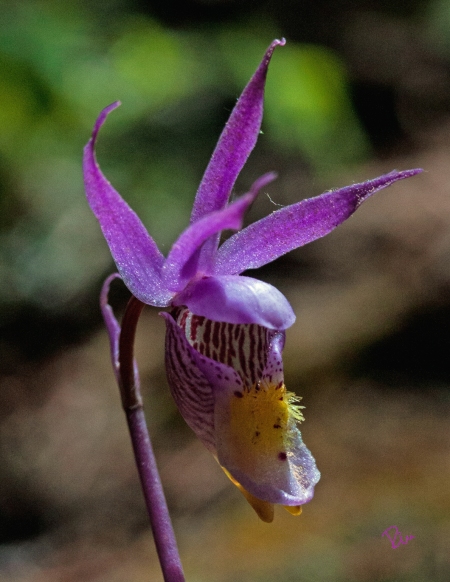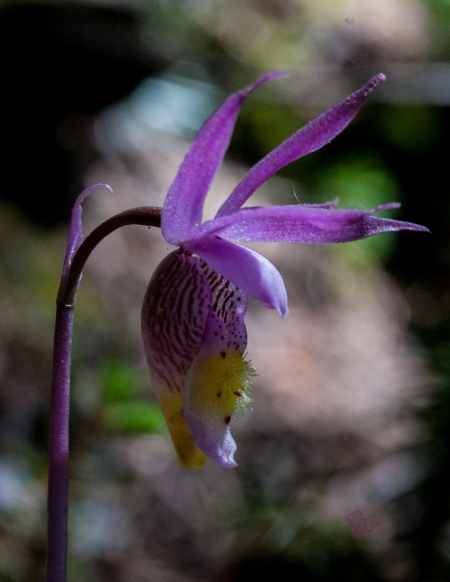A recent orchid alert by a photographer friend sent me off searching for what is arguably the most beautiful orchid in North America, the Calypso bulbosa var. americana (Eastern Fairy Slipper). Calypso (Kalypsō) was a nymph in Greek mythology. The etymology of Calypso’s name is from καλύπτω (kalyptō), meaning “to cover”, “to conceal”, “to hide”, or “to deceive”. The Calypso orchid lives up to the name.
The fairy slipper orchid has a circumpolar distribution, occurring in Europe, Asia and North America. In North America it occurs from Alaska to Labrador, south to northern California, Arizona, Michigan and Maine. Although they have a wide range they are uncommon and very hard to find. Fortunately here in Colorado there is a hiking trail which goes to a water feature named for this elusive beauty, the Calypso Cascades. After a 2.8 mi/4.5 km hike up the Wild Basin Trail in Rocky Mountain National Park I was rewarded with my second encounter with this uncommon 4-6in/10-15cm plant…
In autumn, generally around September, the single dark green leaf of the fairy slipper orchid sprouts from its stem. This leaf lasts through winter, even surviving under snow in the cold parts of its range. With the arrival of spring the orchid flowers and the leaf fades. This means the plant is leafless for most of the summer.
The single leaf has a very limited ability to photosynthesize and so cannot provide all the nutrients the plant needs. This orchid, along with many others in Colorado, is a parasite that grows by exploiting a fungus in the soil that shares nutrients taken from the roots of trees. This is why they cannot be successfully transplanted.
I grabbed my close-up lens and got down on the ground to capture this uncommon sight thereby attracting a queue of photographers waiting for a turn. Here are the results of my turn…
Like many orchids, the Calypso bulbosa has a deceptive flower that provides no reward for insect visitors. The scent and shape of the flower mimics those that do have nectar which lures bumble bees (Bombus species) to the bloom. The bees land on the lip of the flower and enter the pouch in search of food. Failing to find any nectar the bee exits the pouch rubbing against the overhanging column. Pollen is deposited on the bee and is then transferred to the next flower it visits. The deception consists of markings and an odor of vanilla both of which promise a nectar reward that does not actually exist. The flowering period of this species is synchronized with the emergence of naïve bumblebee queens. Individual bees subsequently learn to avoid these flowers and that avoidance is learned quite rapidly. Avoidance behavior by pollinators is detrimental to reproduction in Calypso. This negative effect is offset by small variations in flower color and pattern and by the large number of seeds produced in plants that successfully pull off this deception.
Calypso is said to be in decline particularly in the southern part of its range. Unfortunately habitat destruction is a threat for the fairy slipper orchid. Another significant threat to this stunning plant is the presence of people. We either accidentally trample them or deliberately remove the plants from the wild for unsuccessful attempts to transplant them to our gardens. In addition to being very fussy about where it grows, the fragile roots of the fairy slipper orchid make it susceptible to disturbance. A small rearrangement by a well-meaning photographer could kill the plant. The fairy slipper orchid is listed on the Convention on International Trade in Endangered Species (CITES) which means that any international trade in this species is carefully monitored. Hopefully this may lessen the threat of over-collection. In addition, this species is protected within many parks and reserves throughout its range.
Let’s hope this deceptive little parasite is here for generations of photographers…



